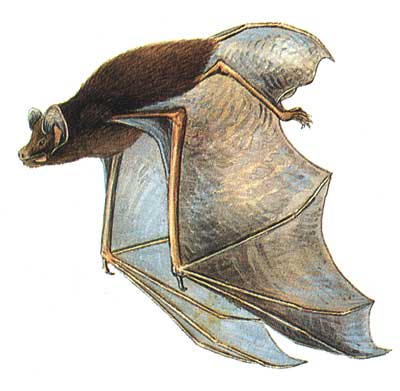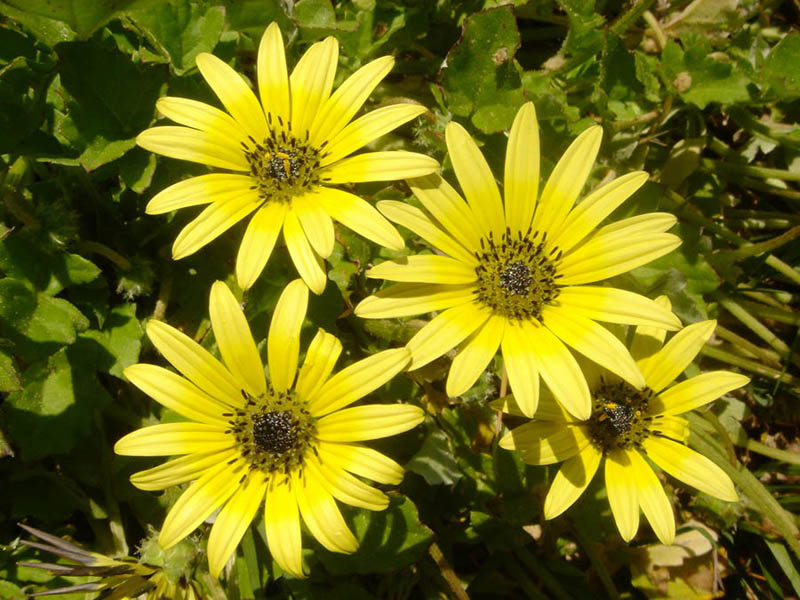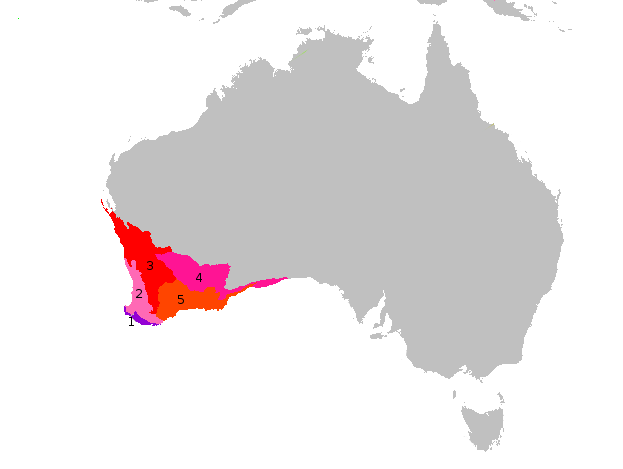|
Chocolate Wattled Bat
The chocolate wattled bat (''Chalinolobus morio'') is a bat in the family Vespertilionidae. It is found only in Australia, including the island Tasmania, and widespread in southern regions. It is known to reside from sea level to at least in Victoria. Taxonomy A description of the species was published by John Edward Gray in 1841, assigning it to the genus '' Scotophilus''. There are three synonyms for the species: ''Chalinolobus australis'', ''Chalinolobus microdon'', and ''Chalinolobus signifer''. Taxonomic research on the isolated populations is lacking. The name of the genus is derived from ancient Greek: ''chalinos'', meaning 'bridle', and ''lobos'', lobe. The specific epithet is also from the greek name Moros, the "son of night". The term 'wattled' refers to a characteristic of its related species, a conspicuous lobe at the head. Description A vespertilionid, with a rich and nearly uniform brown colour that resembles milk chocolate. The colour is often lighter at th ... [...More Info...] [...Related Items...] OR: [Wikipedia] [Google] [Baidu] |
John Edward Gray
John Edward Gray (12 February 1800 – 7 March 1875) was a British zoologist. He was the elder brother of zoologist George Robert Gray and son of the pharmacologist and botanist Samuel Frederick Gray (1766–1828). The same is used for a zoological name. Gray was keeper of zoology at the British Museum in London from 1840 until Christmas 1874, before the natural history holdings were split off to the Natural History Museum. He published several catalogues of the museum collections that included comprehensive discussions of animal groups and descriptions of new species. He improved the zoological collections to make them amongst the best in the world. Biography Gray was born in Walsall, but his family soon moved to London, where Gray studied medicine. He assisted his father in writing ''The Natural Arrangement of British Plants'' (1821). After being blackballed by the Linnean Society of London, Gray shifted his interest from botany to zoology. He began his zoological ... [...More Info...] [...Related Items...] OR: [Wikipedia] [Google] [Baidu] |
Bogong Moth
The bogong moth (''Agrotis infusa'') is a temperate species of Nocturnal, night-flying moth, notable for its biannual long-distance seasonal Lepidoptera migration, migrations towards and from the Australian Alps, similar to the diurnal monarch butterfly. During the autumn and winter it is found in southern Queensland, western New South Wales, western Victoria (Australia), Victoria, and also in South Australia, South and Western Australia. Adult bogong moths breed and larvae hatch during this period, consuming winter pasture plants during their growth. During the Spring (season), spring, the moths migrate south or east and reside in mountains such as Mount Bogong, where they gregariously Aestivation, aestivate over the summer until their return towards breeding grounds again in the autumn. The moth's name, ''bogong'', is derived from an Australian Aboriginal languages, Australian Aboriginal language; the Dhudhuroa language, Dhudhuroa word ''bugung'' describes the brown colourati ... [...More Info...] [...Related Items...] OR: [Wikipedia] [Google] [Baidu] |
Petrochelidon Ariel
The fairy martin (''Petrochelidon ariel'') is a member of the swallow family of passerine birds which breeds in Australia. It is bird migration, migratory wintering through most of Australia, with some birds reaching New Guinea and Indonesia. It is increasingly a wanderer to New Zealand, where it may have bred. This species is frequently placed in the genus ''Hirundo'' as ''Hirundo ariel''. This is a bird of open country near water, and is usually seen near its nest sites in cliffs, culverts or bridges. Description The fairy martin is dumpy and square tailed. It averages long and weighs . The adult has an iridescent blue back, brown wings and tail, a rufous crown and nape, and a whitish rump. The underparts are dull white. The sexes are similar, but young birds are duller and browner, with a paler forehead and pale fringes to the back and wing feathers. This species can be distinguished from other Australian swallows by its pale rump. The most similar species, the tree martin, ... [...More Info...] [...Related Items...] OR: [Wikipedia] [Google] [Baidu] |
Riparian
A riparian zone or riparian area is the interface between land and a river or stream. In some regions, the terms riparian woodland, riparian forest, riparian buffer zone, riparian corridor, and riparian strip are used to characterize a riparian zone. The word ''riparian'' is derived from Latin '' ripa'', meaning " river bank". Riparian is also the proper nomenclature for one of the terrestrial biomes of the Earth. Plant habitats and communities along the river margins and banks are called riparian vegetation, characterized by hydrophilic plants. Riparian zones are important in ecology, environmental resource management, and civil engineering because of their role in soil conservation, their habitat biodiversity, and the influence they have on terrestrial and semiaquatic fauna as well as aquatic ecosystems, including grasslands, woodlands, wetlands, and even non-vegetative areas. Riparian zones may be natural or engineered for soil stabilization or restoration. These zon ... [...More Info...] [...Related Items...] OR: [Wikipedia] [Google] [Baidu] |
Macroderma Gigas
The ghost bat (''Macroderma gigas'') is a species of bat found in northern Australia. The species is the only Australian bat that preys on large vertebrates – birds, reptiles and other mammals – which they detect using acute sight and hearing, combined with echolocation, while waiting in ambush at a perch. The wing membrane and bare skin is pale in colour, their fur is light or dark grey over the back and paler at the front. The species has a prominent and simple nose-leaf, their large ears are elongated and joined at lower half, and the eyes are also large and dark in colour. The first description of the species was published in 1880, its recorded range has significantly contracted since that time. Taxonomy A species of ''Macroderma (bat), Macroderma'', one of several genera in the family Megadermatidae (false vampires). The family all have large eyes, a nose-leaf and tragus, long ears joined at the base, and are also found in southern Asia and central Africa. The descript ... [...More Info...] [...Related Items...] OR: [Wikipedia] [Google] [Baidu] |
Rhinonicteris Aurantia
The orange leaf-nosed bat (''Rhinonicteris aurantia'') is a bat in the family Rhinonycteridae. It is the only living species in the genus '' Rhinonicteris'' which is endemic to Australia, occurring in the far north and north-west of the continent. They roost in caves, eat moths, and are sensitive to human intrusion. Description A small bat weighing 7–11 grams that resides in large colonies of subterranean environs, usually caves and abandoned mines. The colour of the fur is variable between individuals, brownish, a reddish orange shade, lemon-yellow or white. The forearm measurement range from 42 to 46. A complex structure—a characteristic of some bats referred to as 'nose-leaf'—is broad and flattened at the base, with a central gap, similar to a horseshoe-shape of related species. The top of the leaf-shaped structure is scalloped, and the nasal pits deeply recessed, an opening behind this structure leads from an enlarged secretory gland. The noseleaf does not have by any ... [...More Info...] [...Related Items...] OR: [Wikipedia] [Google] [Baidu] |
Southwest Australia (ecoregion)
Southwest Australia is a biogeographic region in Western Australia. It includes the Mediterranean-climate area of southwestern Australia, which is home to a diverse and distinctive flora and fauna. The region is also known as the Southwest Australia Global Diversity Hotspot. Geography The region includes the Mediterranean forests, woodlands, and scrub ecoregions of Western Australia. The region covers 356,717 km2, consisting of a broad coastal plain 20–120 kilometres wide, transitioning to gently undulating uplands made up of weathered granite, gneiss and laterite. Bluff Knoll in the Stirling Range is the highest peak in the region, at 1,099 metres (3,606 ft) elevation. Desert and xeric shrublands lie to the north and east across the centre of Australia, separating Southwest Australia from the other Mediterranean and humid-climate regions of the continent. Climate The region has a wet-winter, dry-summer Mediterranean climate, one of five such regions in the world. ... [...More Info...] [...Related Items...] OR: [Wikipedia] [Google] [Baidu] |
Old-growth Forest
An old-growth forest or primary forest is a forest that has developed over a long period of time without disturbance. Due to this, old-growth forests exhibit unique ecological features. The Food and Agriculture Organization of the United Nations defines primary forests as naturally regenerated forests of native tree species where there are no clearly visible indications of human activity and the ecological processes are not significantly disturbed. One-third (34 percent) of the world's forests are primary forests. Old-growth features include diverse tree-related structures that provide diverse wildlife habitats that increases the biodiversity of the forested ecosystem. Virgin or first-growth forests are old-growth forests that have never been logged. The concept of diverse tree structure includes multi-layered canopies and canopy gaps, greatly varying tree heights and diameters, and diverse tree species and classes and sizes of woody debris., the world has of primary forest ... [...More Info...] [...Related Items...] OR: [Wikipedia] [Google] [Baidu] |
Leeuwin-Naturaliste National Park
Leeuwin-Naturaliste National Park is a national park in the South West (Western Australia), South West region of Western Australia, south of Perth. It is named after the two Cape (geography), capes either end of the park, Cape Leeuwin and Cape Naturaliste. It is located in the Augusta-Margaret River and Busselton council areas, and is claimed to have the highest visiting numbers of any national park in Western Australia. The park received 2.33 million visitors through 2008–2009. Description The park extends over , from Cape Naturaliste in the north to Cape Leeuwin in the south. It is composed of 28 separate reserves, which together have an area of about . Despite the park's large size, the reserves are fragmented, and in many places the park consists only of a narrow coastal strip.Keighery, Greg & Lyons, Michael & Gibson, N. & Keighery, B.. (2011). Vascular flora of Leeuwin-Naturaliste National Park. ''Conservation Science Western Australia''. 2011, Vol. 8 Issue 1, p31-60. 30p. ... [...More Info...] [...Related Items...] OR: [Wikipedia] [Google] [Baidu] |
Kings Park, Western Australia
Kings Park is a park overlooking Perth Water and the Perth central business district, central business district of Perth, Western Australia. The park is a mixture of grassed parkland, botanical gardens and natural bushland on Mount Eliza, Western Australia, Mount Eliza with two-thirds of the grounds conserved as native bushland. Offering panoramic views of the Swan River (Western Australia), Swan River and Darling Scarp, Darling Range, it is home to over 324 native plant varieties, 215 known indigenous fungi species and 80 bird species. It is the most popular visitor destination in Western Australia, being visited by over five million people each year. Besides tourist facilities, Kings Park contains the State War Memorial, the Royal King's Park Tennis Club, and the Mount Eliza Reservoir. The streets are tree-lined with individual plaques dedicated by family members to Western Australian service men and women who died in World War I and World War II. The park is also rich in ... [...More Info...] [...Related Items...] OR: [Wikipedia] [Google] [Baidu] |
Perth, Western Australia
Perth () is the list of Australian capital cities, capital city of Western Australia. It is the list of cities in Australia by population, fourth-most-populous city in Australia, with a population of over 2.3 million within Greater Perth . The Extremes on Earth#Other places considered the most remote, world's most isolated major city by certain criteria, Perth is part of the South West Land Division of Western Australia, with most of Perth metropolitan region, Perth's metropolitan area on the Swan Coastal Plain between the Indian Ocean and the Darling Scarp. The city has expanded outward from the original British settlements on the Swan River (Western Australia), Swan River, upon which its #Central business district, central business district and port of Fremantle are situated. Perth was founded by James Stirling (Royal Navy officer), Captain James Stirling in 1829 as the administrative centre of the Swan River Colony. The city is situated on the traditional lands of the Whadju ... [...More Info...] [...Related Items...] OR: [Wikipedia] [Google] [Baidu] |
Adelaide, South Australia
Adelaide ( , ; ) is the list of Australian capital cities, capital and most populous city of South Australia, as well as the list of cities in Australia by population, fifth-most populous city in Australia. The name "Adelaide" may refer to either Greater Adelaide (including the Adelaide Hills) or the Adelaide city centre; the demonym ''Adelaidean'' is used to denote the city and the residents of Adelaide. The Native title in Australia#Traditional owner, traditional owners of the Adelaide region are the Kaurna, with the name referring to the area of the city centre and surrounding Adelaide Park Lands, Park Lands, in the Kaurna language. Adelaide is situated on the Adelaide Plains north of the Fleurieu Peninsula, between the Gulf St Vincent in the west and the Mount Lofty Ranges in the east. Its metropolitan area extends from the coast to the Adelaide Hills, foothills of the Mount Lofty Ranges, and stretches from Gawler in the north to Sellicks Beach in the south. Named in ho ... [...More Info...] [...Related Items...] OR: [Wikipedia] [Google] [Baidu] |











